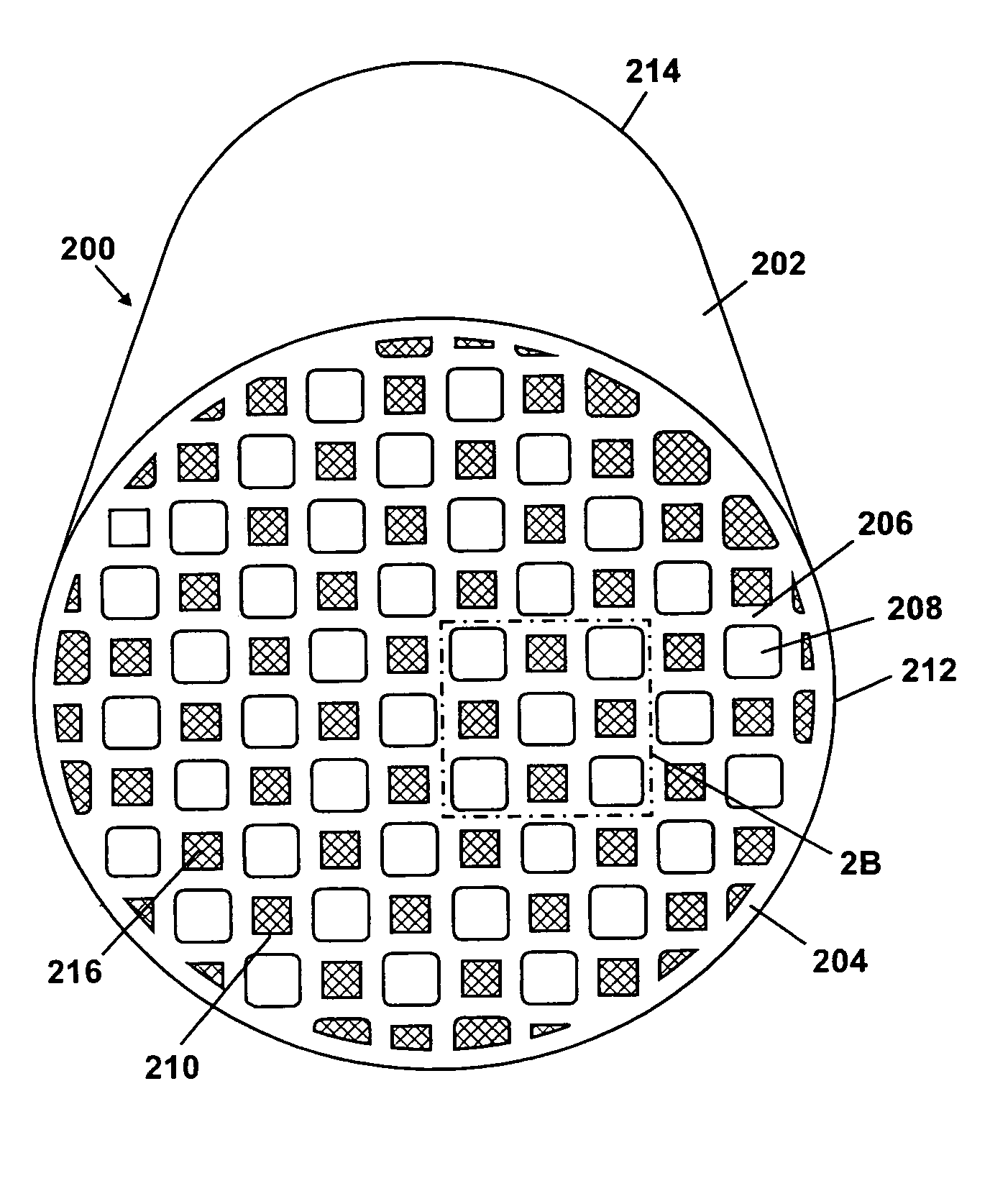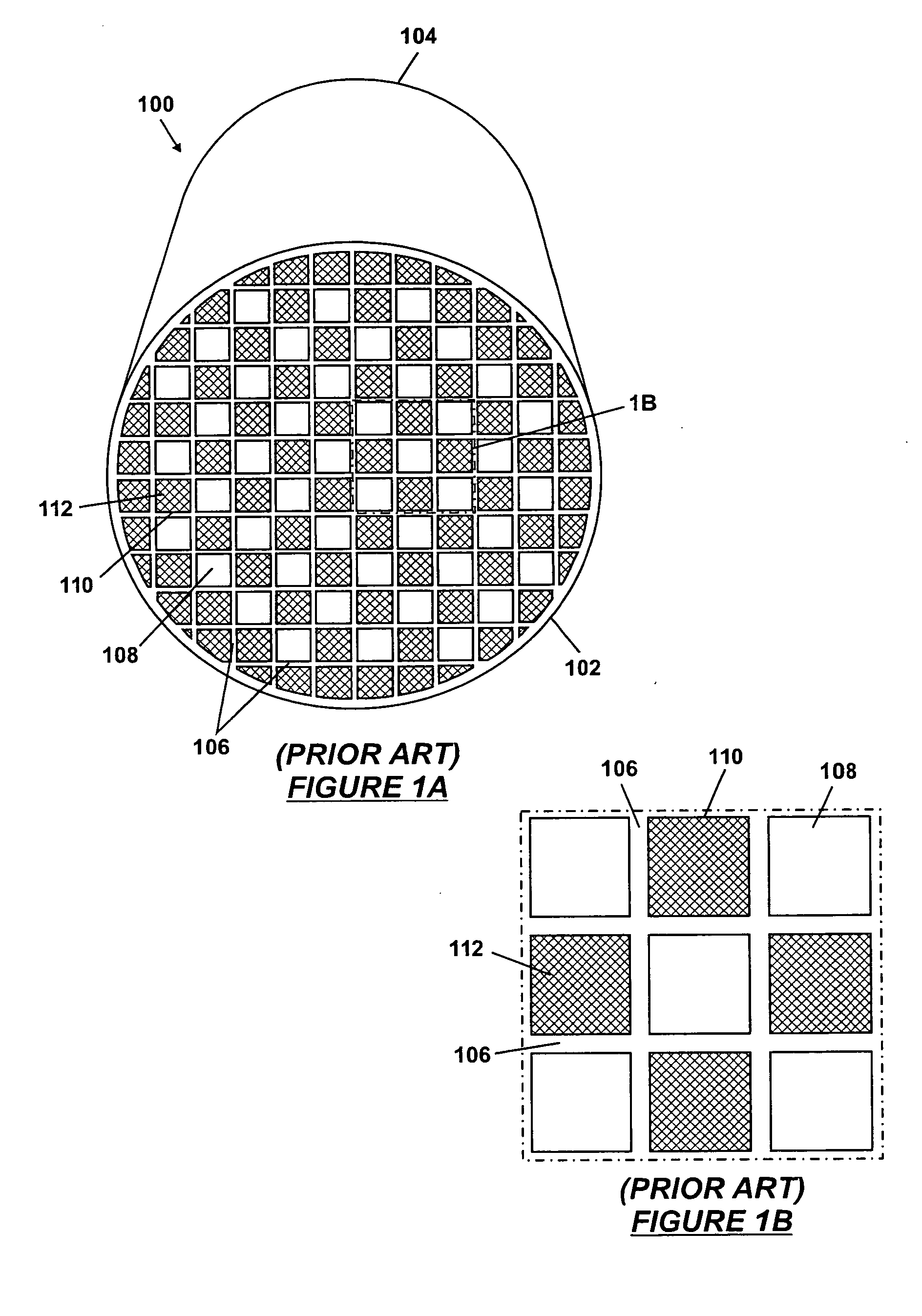Asymmetric honeycomb wall-flow filter having improved structural strength
a honeycomb wall and filter technology, applied in the direction of ceramic extrusion dies, machines/engines, chemical/physical processes, etc., can solve the problems of ash particles, unable to be combustible, and unable to be removed by thermal regeneration
- Summary
- Abstract
- Description
- Claims
- Application Information
AI Technical Summary
Benefits of technology
Problems solved by technology
Method used
Image
Examples
Embodiment Construction
[0030] The invention will now be described in detail with reference to a few preferred embodiments, as illustrated in the accompanying drawings. In the following description, numerous specific details are set forth in order to provide a thorough understanding of the invention. It will be apparent, however, to one skilled in the art that the invention may be practiced without some or all of these specific details. In other instances, well-known features and / or process steps have not been described in detail in order to not unnecessarily obscure the invention. The features and advantages of the invention may be better understood with reference to the drawings and discussions that follow.
[0031] For illustration purposes, FIG. 2A shows a honeycomb wall-flow filter 200 according to an embodiment of the invention. The honeycomb filter 200 has a columnar body 202 whose cross-sectional shape is defined by a skin (or peripheral wall) 204. The profile of the skin 204 is typically circular or...
PUM
| Property | Measurement | Unit |
|---|---|---|
| mean diameters | aaaaa | aaaaa |
| mean diameters | aaaaa | aaaaa |
| thickness | aaaaa | aaaaa |
Abstract
Description
Claims
Application Information
 Login to View More
Login to View More - R&D
- Intellectual Property
- Life Sciences
- Materials
- Tech Scout
- Unparalleled Data Quality
- Higher Quality Content
- 60% Fewer Hallucinations
Browse by: Latest US Patents, China's latest patents, Technical Efficacy Thesaurus, Application Domain, Technology Topic, Popular Technical Reports.
© 2025 PatSnap. All rights reserved.Legal|Privacy policy|Modern Slavery Act Transparency Statement|Sitemap|About US| Contact US: help@patsnap.com



